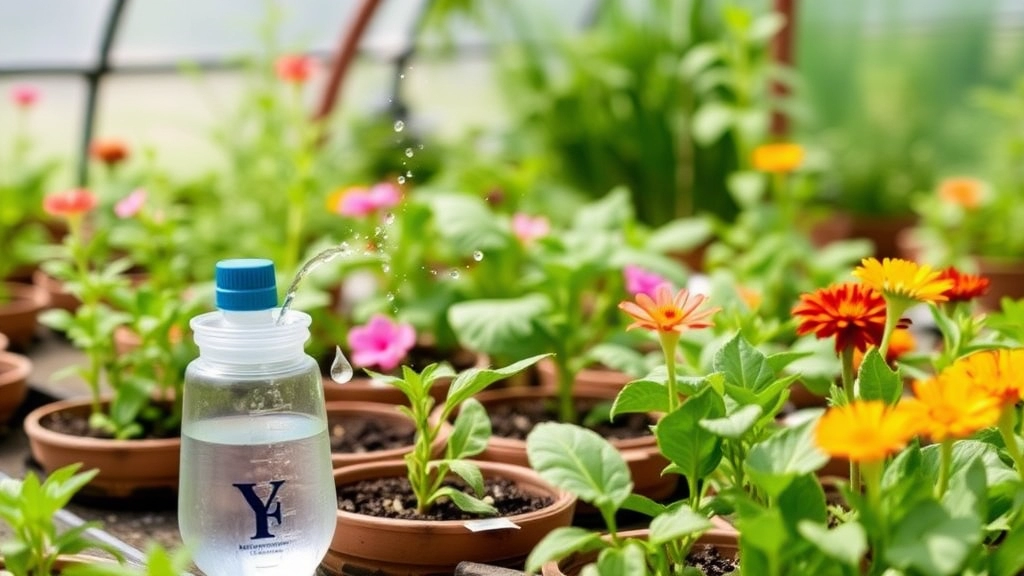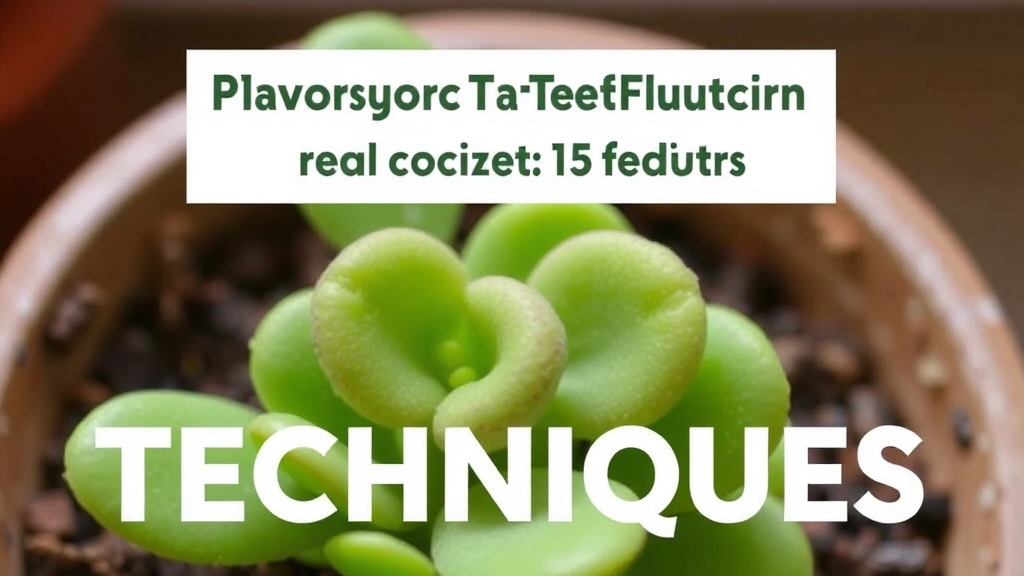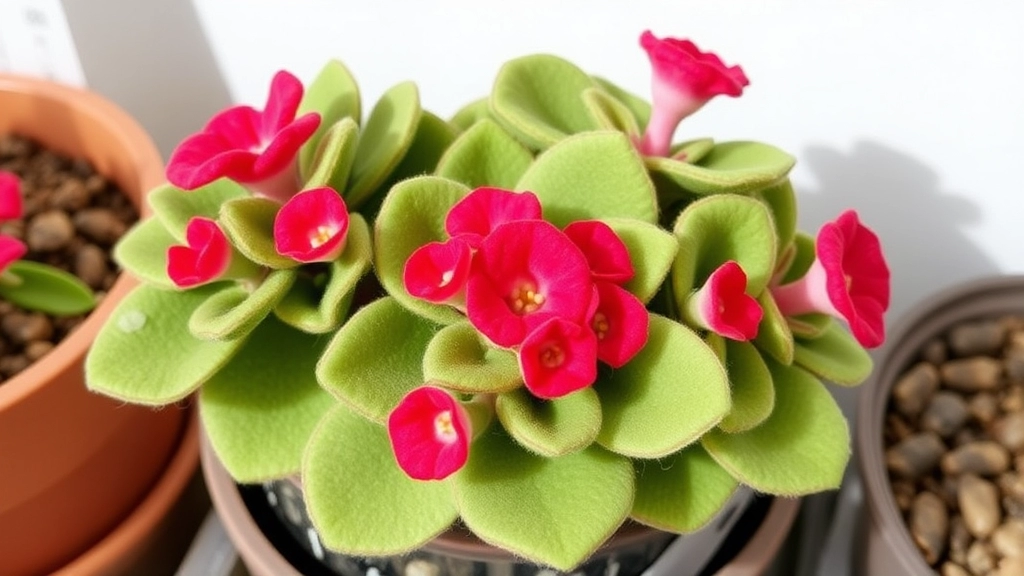Growing the Kalanchoe Beharensis Felt Plant
When it comes to growing the Kalanchoe Beharensis Felt Plant, also known as Velvet Leaf or Elephant’s Ear Kalanchoe, understanding its unique needs is crucial. This distinctive succulent thrives in specific conditions, and knowing these can make all the difference. From optimal light and soil requirements to proper watering techniques, I’ve gathered all the essential tips to help your Kalanchoe Beharensis flourish.
Key Aspects of Care
One of the key aspects of caring for the Kalanchoe Beharensis Felt Plant is getting the watering right. This succulent prefers infrequent but deep watering, allowing the soil to dry out completely between sessions. Additionally, keeping an eye out for common pests and diseases can save your plant from potential harm. With the right care, your Velvet Leaf Kalanchoe can become a stunning addition to your indoor or outdoor garden.
Are you struggling to keep your Kalanchoe Beharensis thriving? The right environment can make all the difference.
Kalanchoe Beharensis, commonly known as the “Chandelier Plant,” flourishes in specific conditions that mimic its native habitat. Here are the key factors to consider for optimal growth:
## Light Requirements
– **Bright, Indirect Light:** This succulent prefers ample sunlight but can suffer from leaf burn if exposed to harsh, direct rays.
– **Ideal Placement:** A south or east-facing window is perfect to ensure it receives at least 6 hours of light daily.
## Temperature and Humidity
– **Temperature Range:** Kalanchoe Beharensis thrives in temperatures between 18°C to 24°C (65°F to 75°F).
– **Avoid Cold Drafts:** Protect your plant from sudden temperature drops, as it is sensitive to frost.
– **Humidity Levels:** This plant prefers low humidity, making it suitable for indoor environments.
## Soil Type
– **Well-Draining Soil:** Use a cactus or succulent mix that allows excess water to drain quickly.
– **pH Level:** A slightly acidic to neutral pH (around 6.0 to 7.0) is ideal for its growth.
## Container Choice
– **Pots with Drainage Holes:** Ensure your pot has drainage holes to prevent waterlogging, which can lead to root rot.
– **Size Matters:** Choose a pot that is slightly larger than the root ball to allow for growth without excess soil that retains moisture.
For more detailed care tips, you can check out our [expert tips for healthy growth](https://planthq.org/kalanchoe-beharensis-care-expert-tips-for-healthy-growth/) of Kalanchoe Beharensis. Additionally, if you’re interested in propagation, our guide on [care and propagation of Kalanchoe Beharensis](https://planthq.org/care-and-propagation-of-kalanchoe-beharensis-tree/) provides step-by-step instructions.
Watering and Feeding Requirements

So, you’ve got your Kalanchoe Beharensis and you’re wondering how to keep it thriving, right? One of the biggest worries for plant parents is getting the watering and feeding just right. Let’s break it down.
Watering Tips
- Frequency: Kalanchoe Beharensis prefers to dry out between waterings. Generally, every 2-3 weeks should do the trick, but this can vary based on your environment.
- Check the Soil: Stick your finger about an inch into the soil. If it feels dry, it’s time to water. If it’s still damp, wait a few more days.
- Watering Method: When you water, do it thoroughly. Let the water flow through the drainage holes. This ensures the roots get a good drink without sitting in soggy soil.
- Seasonal Adjustments: In winter, cut back on watering. This plant goes dormant and doesn’t need as much moisture.
Feeding Guidelines
- Type of Fertiliser: Use a balanced, water-soluble fertiliser for succulents. Look for something with a ratio like 10-10-10 or similar.
- When to Feed: Feed your Kalanchoe Beharensis during the growing season, which is typically spring and summer. Once a month should be enough.
- Dilution: Always dilute the fertiliser to half the recommended strength. Too much can harm your plant.
- Skip in Dormancy: In the fall and winter months, stop feeding altogether. Your plant will be resting, and it doesn’t need the extra nutrients.
Common Pests and Diseases to Watch Out For
As we delve deeper into caring for your Kalanchoe Beharensis, it’s essential to be aware of potential threats that could hinder its growth.
Common Pests:
- Mealybugs: These tiny, white, cotton-like insects can cluster on leaves and stems, sucking sap and weakening your plant.
- Aphids: Small and green, they also feed on sap, leading to stunted growth and distorted leaves.
- Spider Mites: Often found in dry conditions, these pests create fine webbing and cause yellowing of leaves.
- Scale Insects: These pests appear as small bumps on stems and leaves, robbing your plant of nutrients.
Diseases to Monitor:
- Root Rot: This occurs when the plant is overwatered, leading to mushy roots and eventual plant death.
- Powdery Mildew: A fungal infection that manifests as a white powdery substance on leaves, usually in humid conditions.
- Leaf Spot: Caused by various fungi or bacteria, this disease leads to dark spots on leaves, which may eventually fall off.
Prevention and Treatment:
- Regular Inspections: Regularly check your Kalanchoe for any signs of pests or diseases. Early detection is key.
- Proper Watering: Ensure you’re not overwatering your plant to prevent root rot. For more tips, check out our guide on watering best practices for Kalanchoe Tomentosa.
- Neem Oil: This natural pesticide can help manage pest infestations without harming the plant.
- Good Air Circulation: Ensure your plant has enough space and airflow to reduce humidity levels, which can deter fungal infections. Learn more in our expert tips for healthy Kalanchoe Beharensis growth.
Propagation Techniques: Cuttings, Offsets, and Seeds

As we explore the propagation techniques for Kalanchoe Beharensis, it’s essential to consider how these methods can enhance your gardening experience.
Cuttings
One of the simplest and most effective ways to propagate Kalanchoe Beharensis is through cuttings. This method allows you to create new plants from existing ones, ensuring a seamless transition for your garden.
- Select a Healthy Stem: Choose a stem that is healthy and robust.
- Cut at the Right Angle: Use clean, sharp scissors to cut a stem about 10-15 cm long.
- Allow to Callus: Place the cutting in a dry, warm location for a few days until the cut end calluses over.
- Planting: Once callused, plant the cutting in well-draining soil, ensuring it is stable.
Offsets
Offsets are another fantastic way to propagate your Kalanchoe Beharensis. These are small plants that grow at the base of the parent plant.
- Identify Offsets: Look for small plants that have developed roots.
- Gently Remove: Carefully separate them from the parent plant, taking care not to damage the roots.
- Replant: Place the offsets in their own pots with well-draining soil.
Seeds
While less common, propagating Kalanchoe Beharensis from seeds can be rewarding. This method requires a bit more patience but can yield unique plants.
- Seed Collection: If your plant flowers, collect seeds when they are ripe.
- Sowing: Sow seeds in a seed tray filled with a light, well-draining mix.
- Humidity and Light: Cover lightly and maintain humidity until germination, placing in indirect sunlight.
By mastering these propagation techniques, you can expand your collection of Kalanchoe Beharensis effortlessly.
Seasonal Care and Dormancy Management
As we transition through the seasons, it’s essential to adapt our care for Kalanchoe Beharensis to ensure optimal growth and health.
Understanding Dormancy
Kalanchoe Beharensis, like many succulents, experiences a period of dormancy, typically in the colder months.
During this time, the plant slows down its growth and requires less attention.
Key Tips for Managing Dormancy:
- Reduce Watering: Cut back on watering frequency. Allow the soil to dry out completely between waterings.
- Lower Temperatures: Keep your plant in a cooler environment, ideally between 10-15°C (50-59°F).
- Limit Fertilization: Avoid feeding during dormancy. Wait until new growth appears in spring.
Seasonal Adjustments
As the seasons change, so should your approach to Kalanchoe Beharensis care.
Spring and Summer Care:
- Increase Watering: As temperatures rise, resume regular watering. Ensure the soil is well-draining.
- Fertilize: Use a balanced fertiliser every 4-6 weeks to encourage growth.
- Sunlight Exposure: Ensure your plant receives plenty of bright, indirect sunlight.
Autumn Care:
- Prepare for Dormancy: Gradually reduce watering and stop fertilising as temperatures drop.
- Monitor Temperature: Move your plant indoors if necessary to protect it from frost.
By understanding and adapting to the seasonal needs of Kalanchoe Beharensis, you can ensure its vitality year-round.
For more detailed information on care tips, check out our comprehensive care guide for Kalanchoe Beharensis. Additionally, if you’re interested in learning about the different varieties of Kalanchoe Tomentosa, visit our types and care tips section.
So, you’ve got your Kalanchoe Beharensis, and you’re wondering where to put it for the best growth.
Let’s dive into the ideal placement for this gorgeous succulent.
### Indoor Placement
– **Bright Light**: Kalanchoe loves the sun. A south or west-facing window is perfect.
– **Avoid Drafts**: Keep it away from cold drafts or heating vents. This plant doesn’t fancy sudden temperature changes.
– **Humidity**: It thrives in low humidity. So, steer clear of overly humid rooms like bathrooms.
### Outdoor Placement
– **Full Sun**: If you’re putting it outside, aim for a spot that gets at least 6 hours of sunlight daily.
– **Sheltered Spot**: A little shade during the hottest part of the day can help prevent leaf burn.
– **Well-Draining Soil**: Ensure the soil drains well to avoid root rot. A sandy or gritty mix works wonders.
### Special Considerations
– **Pot Selection**: Use pots with drainage holes. This helps excess water escape.
– **Temperature**: Kalanchoe prefers temperatures between 18-24°C. Keep it comfy!
For more detailed care tips, check out the [care and propagation of Kalanchoe Beharensis](https://planthq.org/care-and-propagation-of-kalanchoe-beharensis-tree/) and the [complete care guide for Kalanchoe Blossfeldiana succulent](https://planthq.org/complete-care-guide-for-kalanchoe-blossfeldiana-succulent/).
FAQs about Kalanchoe Beharensis Felt Plant
How often should I water my Kalanchoe Beharensis?
The Kalanchoe Beharensis prefers to dry out between waterings. Typically, watering every 2-3 weeks is sufficient, but this can vary depending on your environment. Always check the soil moisture before watering.
What’s the best way to check if my plant needs water?
Stick your finger about an inch into the soil. If it feels dry, it’s time to water. If it’s still damp, wait a few more days.
What type of fertiliser should I use for my Kalanchoe Beharensis?
Use a balanced, water-soluble fertiliser for succulents, such as a 10-10-10 ratio. Always dilute the fertiliser to half the recommended strength to avoid harming the plant.
When should I feed my Kalanchoe Beharensis?
Feed your Kalanchoe Beharensis during the growing season, typically in spring and summer. Feeding once a month is usually adequate. Do not feed during the fall and winter months when the plant is dormant.
How can I propagate Kalanchoe Beharensis?
There are three main methods to propagate Kalanchoe Beharensis: cuttings, offsets, and seeds.
Cuttings
Select a healthy stem, cut it at a 10-15 cm length, allow it to callus over for a few days, and then plant it in well-draining soil.
Offsets
Identify small plants growing at the base of the parent plant, gently remove them with their roots, and replant them in their own pots with well-draining soil.
Seeds
If your plant flowers, collect the seeds when ripe, sow them in a light, well-draining mix, and maintain humidity and indirect sunlight until germination.
Should I adjust watering during different seasons?
Yes, you should water less frequently during winter as the plant goes dormant and requires less moisture.
Can I propagate Kalanchoe Beharensis from seeds?
Yes, while less common, propagating from seeds is possible and can be rewarding. Collect seeds from flowers, sow them in a well-draining mix, and maintain humidity and indirect sunlight until they germinate.
References
-
Gardening Know How: Kalanchoe Beharensis Care
-
The Spruce: How to Grow Kalanchoe Beharensis
-
World of Succulents: Kalanchoe Beharensis (Felt Bush)
